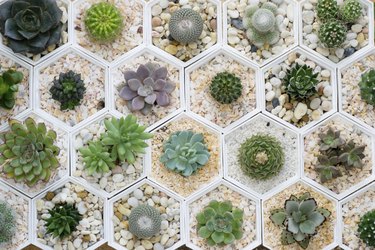
Picture the desert, and you probably conjure up the image of a towering cactus, arms reaching toward the blazing sun. Desert cactus plants (Cactaceae spp.) have adapted to live in hot conditions with very little water. Not all cactus plants grow in the desert -- some species actually tolerate much colder climates -- but those that do have several characteristics in common. Many of these characteristics lend themselves well to home gardens.
Thick-Skinned
Video of the Day
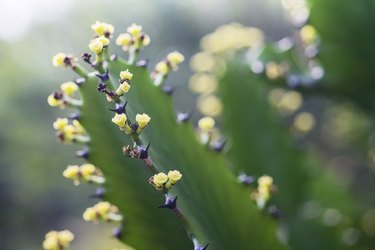
Most desert cactus plants have thick, waxy skin. The skin protects the plant's water reserves and keeps the water from evaporating. This makes these plants a good choice for dry, hot areas in the home garden, or for low-water landscapes. And although the skin may be thick, it isn't stiff: The skin on cactus plants expands and contracts as water levels change. Many desert cactus plants have spines that cover the skin. The spines can be long, short, hooked, sharp or even soft. They protect the plant from some -- but not all -- of the hungry creatures that live in the desert. Finally, all desert cactus plants produce flowers. The blooms may be yellow, purple, orange, red or white. You might not see them -- some blossom for only a day or open only at night -- but they do exist, and the flowers -- and the resulting seeds -- are how cactus plants reproduce.
Video of the Day
Differently Shaped
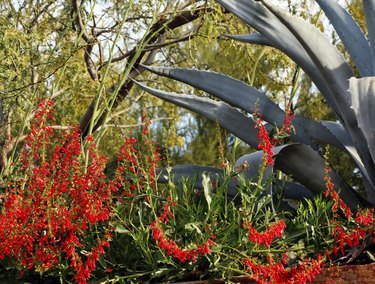
Desert cactus plants come in all shapes and sizes. The largest can tower to over 40 feet, with arms as thick and long as tree branches, while others creep over the ground. In fact, such cactus plants can fill in borders and work as a ground cover in a home garden. Many have elongated stems, but others are composed of multiple short joints. Some are smooth, while others have ridges, bumps or ribs. Some, such as the fishhook barrel cactus (Ferocactus wislizenii), which is hardy in U.S. Department of Agriculture plant hardiness zones 8 through 11, are round and fat. These often make good container plants, so long as the containers have holes in the base to allow for proper drainage. Others are round but thin, resembling ping-pong paddles.
Long-Lived
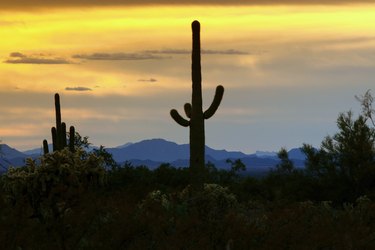
Many desert cactus plants live for a long time. The large, tree-like saguaro cactus (Carnegiea gigantea), for example, can live for up to 200 years. Growing in USDA plant hardiness zones 9 and 10, the saguaro cactus owes its long life to its adaptation to its desert environment and to the fact that it, like many other cactus plants, grows rather slowly. In fact, the average lifespan of a desert cactus when grown in its natural habitat is between 50 and 200 years. In the home garden, a cactus plant's lifespan may be shorter, but it is still likely to be a long-term resident of your landscape.
Animal-Friendly
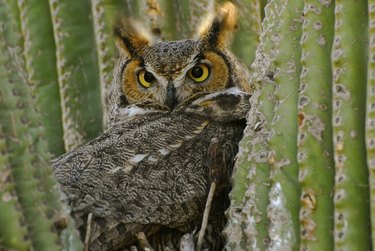
Although it's true that a cactus plant's spines might deter an animal from munching on its skin, it doesn't mean that the plant isn't useful in other ways. In fact, many animals use cactus plants as homes -- they either create a hollow inside the cactus or use parts of the cactus to create a nest. Packrats, for example, use the stems of cholla cactus plants (Cylindropuntia fulgida), which separate easily from the rest of the plant, to form the walls of their nests. Cholla cactus plants are hardy in USDA zones 8 through 11. People also find cactus plants useful, and for more than just their ornamental value. The "ribs" of a dead saguaro cactus are as strong as wood and can be used to build furniture.